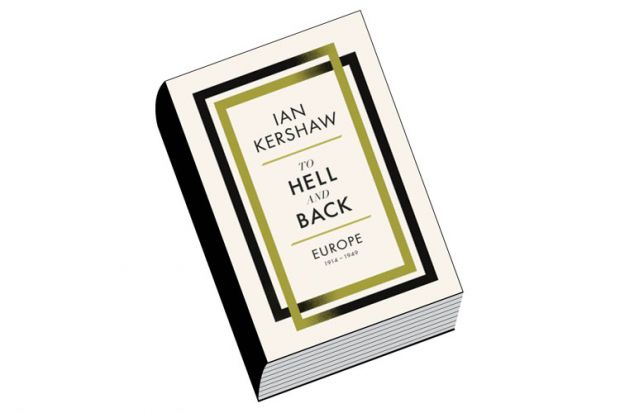Writing a general history of Europe in the 20th century was already a significant challenge before the end of the Soviet Union; its demise in 1991 raised new questions, and additionally resulted in the release of mountains of documents, many of them shedding new light on the topics covered here. Unfortunately, Ian Kershaw does not use any of these materials, nor does he dig deeply enough into recent publications on the USSR or Eastern Europe.
Instead, the author, a lifelong German specialist, tends to put that country at the heart of his narrative. He does include sections on diverse topics, and weaves into the main storyline “four interlocking major elements of comprehensive crisis” unique to 1914-1949. These include the explosion of ethnic-racist nationalism, the demands of irreconcilable territorial revision, as well as “acute class conflict” and, finally, the “protracted crisis of capitalism”.
It is easy to agree with much in this book, although when Kershaw ventures across the German border heading east, he leaves important questions unasked, and, more disappointingly, he fails to bring out the human drama underlying certain key moments. To take but one example, consider the Marshall Plan, announced by US secretary of state George C. Marshall in June 1947 and signed into law in April 1948. Ernest Bevin, the British foreign secretary, and his French counterpart Georges Bidault later said that when they first learned of Marshall’s speech, “The generosity of it was beyond our belief.”
To understand what was at stake, we should recall the social context. In 1946, Britain had just introduced bread rationing, and by early 1947 suffered through the coldest winter on record, as did the Continent. In France, there were bread riots; in Italy, it was just as grim, while there were sullen demonstrations for food and coal in western Germany.
Nevertheless, the deprivation paled in comparison with Eastern Europe and especially the USSR, where it was worst of all. Even so, Stalin said in 1945 that the next five-year plans would focus on heavy industry, not consumer goods. Where did that leave an average Russian working-class family? Not only would they have been feeling the effects of a terrible housing crisis, but in 1946 and 1947 their diet would have consisted mainly of bread and potatoes, with little protein or fruit. Items such as shoes and ready-made clothes were nearly impossible to find, as was soap, even in 1947 when the country would fight a major typhus outbreak. In the countryside, deficiencies were even more pronounced, and in 1946, on top of it all, the Soviet Union faced a famine whose effects lasted well into 1948 and claimed up to 1.5 million lives.
Thus, Europe’s economies needed a kick-start, since nearly all those nations were confronting food shortages and the massive destruction resulting from the war. This background provided the context in which the US’ Marshall offered funds to finance a plan that he insisted the Europeans, explicitly including the Russians, would have to devise. Contrary to Kershaw’s assertion, Marshall had not “hoped and anticipated” that the Soviet Union would reject participation. Curiously, the author asserts that the UK used “almost all” of these monies “to repay” debts. However, the published statistical allocations show that no Marshall Plan funds went to such purposes, but instead overwhelmingly covered commodity procurement: initially food, fuel and fertiliser; then raw materials, semi-finished products, machinery and vehicles.
Kershaw asks whether it was a “big mistake” for Stalin to turn down such help, and he sounds most unsure, for he writes that “from Stalin’s perspective”, the worry was that “the security of the Soviet Union and its satellites was vulnerable to the superior economic power of the United States”. Stalin abruptly rejected the urgently needed aid and then forced that dictate on the suffering millions across Eastern Europe, none of whom would have elected a communist government in a free vote.
We do not need to study dictatorships very long to conclude that when a doctrinaire character such as Stalin puts his theories, or dreams, before the physical well-being of his subjects, then his rule is nothing less than an amoral tyranny. That brings us to this book’s inappropriate title, which might fit Western Europe, although nowhere east of Berlin, where after 1945 people found themselves not back from hell, but condemned for generations to another kind of nightmare.
Robert Gellately is Earl Ray Beck professor of history, Florida State University. He is author, most recently, of Stalin’s Curse: Battling for Communism in War and Cold War (2013).
To Hell and Back: Europe 1914-1949
By Ian Kershaw
Allen Lane, 624pp, £25.00
ISBN 9780713990898 and 9780241187159 (e-book)
Published 24 September 2015
Register to continue
Why register?
- Registration is free and only takes a moment
- Once registered, you can read 3 articles a month
- Sign up for our newsletter
Subscribe
Or subscribe for unlimited access to:
- Unlimited access to news, views, insights & reviews
- Digital editions
- Digital access to THE’s university and college rankings analysis
Already registered or a current subscriber?




